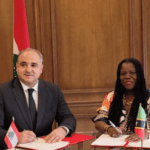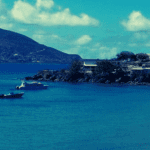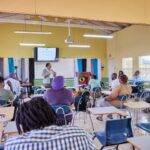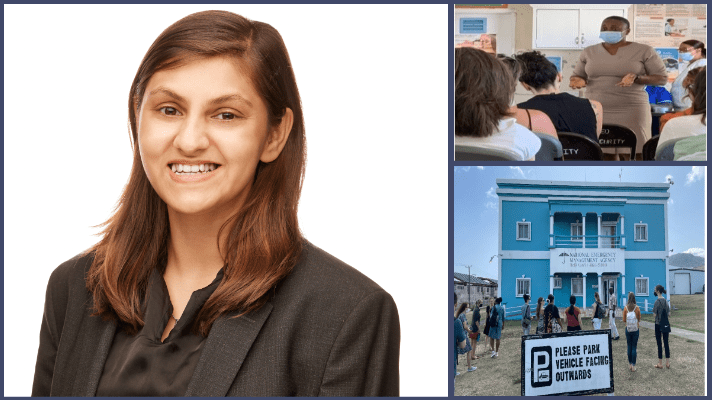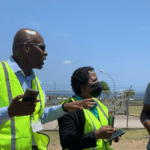
I am Nupur, a graduate student studying Public Health at the University of North Carolina Greensboro. I recently took the Study Abroad course “Global Health and Disaster Preparedness in the Caribbean”. I am grateful to this opportunity for publication from my experience and the situation at hand, from the standpoint of a public health professional. The name of St. Kitts was derived from the fact that one of the English nicknames for Christopher is Kit. These islands are of volcanic origin. It is located in the lesser Antilles in the eastern Caribbean Sea. As soon as I landed, I could sense the culture emphasizing old-fashioned standards of warm, personalized service. I could find many things similar to my home country of India like the humid weather with lots of precipitation aka tropical breeze, left hand driving, British English accent, freshly cooked food, and extremely warm people. I instantly felt like I was home.
Seemingly untouched by the modern times the islands seemed like an ‘old’ Caribbean
gateway – small, intimate hotels, pristine beaches, delightful restaurants, uncluttered
roads, with acres of cane fields, rain forests and coastline of 135 kilometers dominating
the landscape. These small islands built around historical buildings and mountains with a total population of approximately 53,000 people (40,000 in St. Kitts and 12,000 in Nevis) still have the colonial charm. Although new large chain hotels – Marriott in St. Kitts and the four seasons in Nevis are present.
Grocery stores were quite nearby with healthy food options available, which I was not expecting. I could see an abundance of local Caribbean flora in the designed display of the hotel premises. These include orchids, bromeliads, ixora, bougainvillea etc.
Historically the island has struggled through slavery to colonialism to Independence which
is also represented by the red color on their flag. It is the smallest sovereign state in the
Western Hemisphere, in both area and population. Tourism, festivities, crafts, and other displays of that culture are among the island’s main attractions now.
Over the weekend we visited the stately old Bethesda Moravian Church and attended the
Sunday Church Service, followed by the visit to the National Emergency Management
Agency during the week. The church was highly involved with the community and was
actively taking outreach initiatives to engage the younger population. On February 4,
2022, the Federation of Saint Kitts and Nevis renewed its recognition as Tsunami Ready
as a part of regional effort to develop an end-to-end early warning system to save lives.
This recognition is awarded by UNESCO’s Intergovernmental Oceanographic Commission for compliance with all international tsunami risk reduction guidelines and is valid for three years.
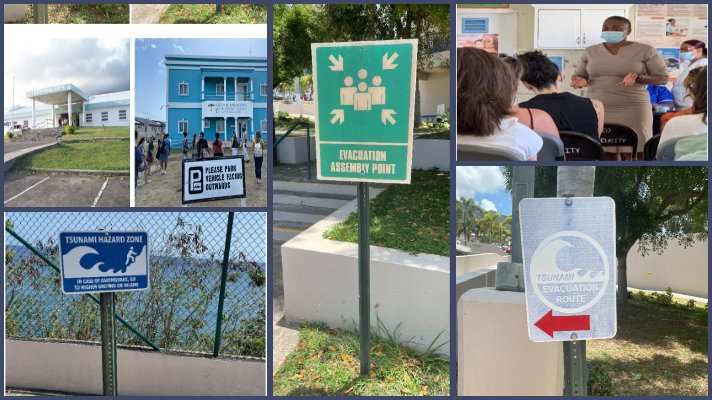
Outputs include inundation, evacuation maps and routes, murals, assembly points, and
an animated awareness video. NEMA and NDMD have actively engaged with business,
artists, students, media for spreading awareness, preparing beforehand, evaluating risks, educating public, conducting drills, and getting the emergency operation plans (EOP) in place. Following the devastating 2017 hurricane season in the Caribbean, Canada
announced the $100 million Pledge for Caribbean Reconstruction and Economic and
Climate Resilience to support St. Kitts and Nevis and the region in reconstruction and
climate resilience. This included strengthening natural disaster planning and response through organizations such as the Caribbean Disaster Emergency Management Agency. However, the island is prone to other hazards like landslide, extreme heat, wildlife and requires more preparedness, especially among the rural population.
We also visited Joseph N France General Hospital in St. Kitts and the Alexandra Hospital in Nevis which are the two main hospitals, apart from 17 primary health centers. A lot of support was offered by the European Union, the humanitarian from the Netherlands and the Government of Taiwan in renovation of Joseph N France General Hospital after the Hurricane Georges back in 1998.
The Healthcare model is preventative and focused on promoting healthy lifestyles. The nurses and the midwifes play a very crucial role in the Healthcare system and are highly educated, they also have unique dress codes according to their designations. There is no concept of public Health Insurance in St. Kitts. However, the citizens of the country who are above 60 years of age and below 18 years of age are exempt from all medical charges. The prescription drugs are also subsidized, covering all the prescriptions irrespective of their quantity under $10 EC.
The healthcare system lacks the resources for advanced specialized care to treat chronic conditions like cancer, cardiovascular diseases etc. leading to the financial burden of caring for patients who are forced to travel overseas to seek treatment. Thinking of this, the government has recently started the Oncology Unit at the hospital in 2016. Further, to reduce the cost of healthcare in the federation, legislation to introduce Universal Healthcare is currently being drafted and will then go to cabinet for consideration.
Overall, it was a good experience to connect with the local people and their culture, visit
these Island’s historical sites, museums, and the pristine beaches. I will miss the authentic
Caribbean food and the island beauty.
Author’s Bio:
Nupur is passionate about global public health, health equity, clinical research and health promotion. Nupur was born and raised in India. She is a published writer and equally enjoys reading other people’s work. Her happiest times are those when she is exploring outdoors and traveling the world.

